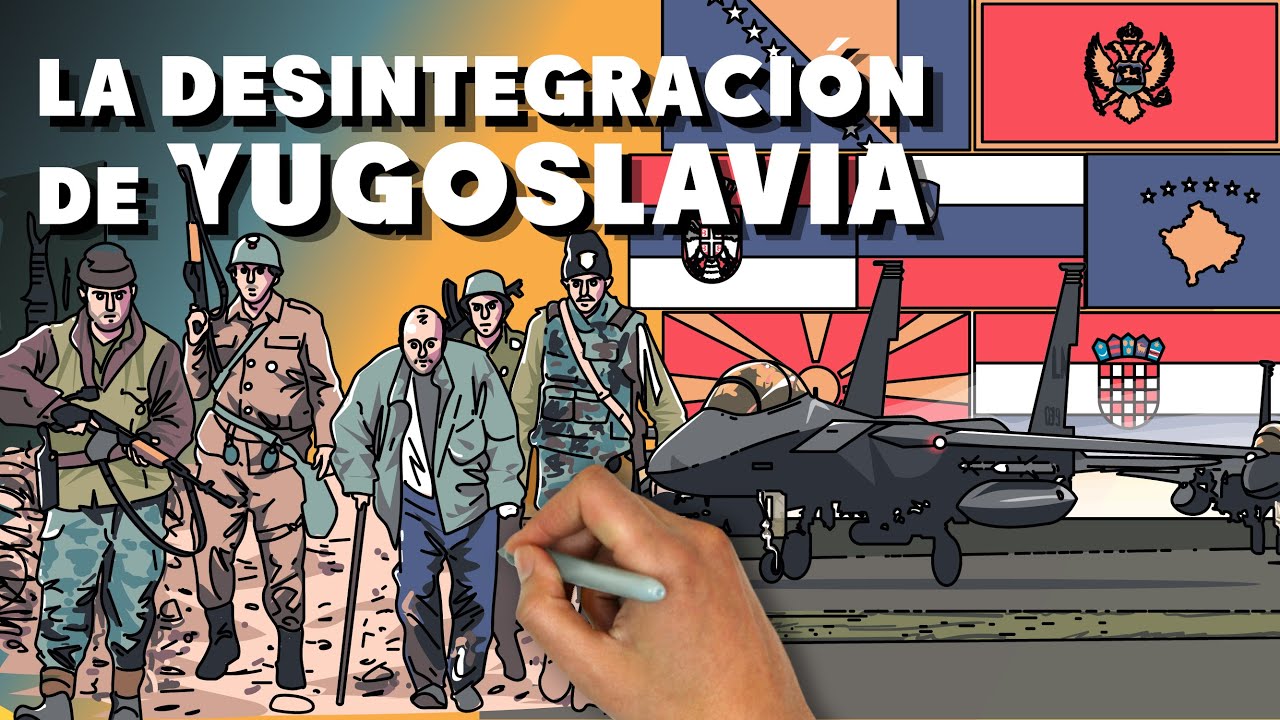Perang Bosnia, Konflik Pasca Runtuhnya Yugoslavia
Summary
TLDRThe video explores the tumultuous history of Bosnia and Herzegovina, highlighting the impact of Josip Broz Tito's leadership and the subsequent collapse of Yugoslavia. It details the rise of ethnic tensions that culminated in the Bosnian War, marked by the tragic Srebrenica massacre, where thousands of Bosniaks were killed. The narrative emphasizes the complexities of the conflict, including international involvement and humanitarian crises, while inviting viewers to reflect on the broader implications of these events for understanding conflict and human rights in modern society.
Takeaways
- 😀 The Balkans are a historically diverse region, leading to ongoing ethnic and political conflicts.
- 😀 Josip Broz Tito was a key figure in Yugoslavia, uniting various ethnic groups and resisting Soviet influence during his leadership.
- 😀 After Tito's death in 1980, Yugoslavia faced economic decline and increased nationalist sentiments among its ethnic groups.
- 😀 The breakup of Yugoslavia in the 1990s led to the emergence of independent nations, including Bosnia and Herzegovina.
- 😀 Serbia, led by ethnic Serbs, opposed the secession of other regions, resulting in military confrontations and tensions.
- 😀 The Bosnian War (1992-1995) was marked by severe violence, including ethnic cleansing campaigns by Serbian forces against Bosniaks and Croats.
- 😀 The Srebrenica massacre in July 1995 resulted in the deaths of over 8,000 Bosniak men and boys, recognized as genocide.
- 😀 The international community, including the UN, faced criticism for its inadequate response to the atrocities during the Bosnian War.
- 😀 The war ended with the Dayton Agreement in 1995, which established a decentralized Bosnia and Herzegovina.
- 😀 The legacy of the conflict continues to affect Bosnia, with ongoing ethnic tensions and challenges in achieving reconciliation.
Q & A
What historical figure is central to the narrative of Yugoslavia's unity?
-Josip Broz Tito is the central figure, known for his charismatic leadership that unified diverse ethnic groups in Yugoslavia.
What were some of the consequences of Tito's death in 1980?
-Tito's death led to rising nationalism, economic instability, and ethnic tensions that eventually contributed to the disintegration of Yugoslavia.
What event marked the formal declaration of Bosnia and Herzegovina's independence?
-Bosnia and Herzegovina declared independence on March 23, 1992, following a referendum in which the majority of voters supported secession from Yugoslavia.
How did Serbia respond to Bosnia's declaration of independence?
-Serbia opposed Bosnia's independence and initiated military actions, leading to the outbreak of the Bosnian War.
What was the role of Ratko Mladic during the Bosnian War?
-Ratko Mladic was the commander of Bosnian Serb forces and was responsible for orchestrating various attacks against Bosniak civilians, including the Srebrenica massacre.
What was the Srebrenica massacre, and why is it significant?
-The Srebrenica massacre, which occurred in July 1995, involved the killing of over 8,000 Bosniak men and boys by Serbian forces and is recognized as one of the worst atrocities in Europe since World War II.
How did the international community react to the Bosnian War?
-The international community's response was largely ineffective, with the United Nations struggling to intervene adequately despite establishing safe areas for civilians.
What were the Dayton Accords, and what did they achieve?
-The Dayton Accords, signed in 1995, ended the Bosnian War and established Bosnia and Herzegovina as a federal state, although it also entrenched ethnic divisions.
What were the underlying factors that contributed to the ethnic conflict in the Balkans?
-The conflict stemmed from historical grievances, ethnic nationalism, economic hardships, and the power vacuum created by the collapse of Tito's regime.
What lasting impact did the Bosnian War have on the region?
-The Bosnian War left deep ethnic divides, a legacy of trauma among the population, and ongoing challenges in achieving political stability and reconciliation.
Outlines

Этот раздел доступен только подписчикам платных тарифов. Пожалуйста, перейдите на платный тариф для доступа.
Перейти на платный тарифMindmap

Этот раздел доступен только подписчикам платных тарифов. Пожалуйста, перейдите на платный тариф для доступа.
Перейти на платный тарифKeywords

Этот раздел доступен только подписчикам платных тарифов. Пожалуйста, перейдите на платный тариф для доступа.
Перейти на платный тарифHighlights

Этот раздел доступен только подписчикам платных тарифов. Пожалуйста, перейдите на платный тариф для доступа.
Перейти на платный тарифTranscripts

Этот раздел доступен только подписчикам платных тарифов. Пожалуйста, перейдите на платный тариф для доступа.
Перейти на платный тарифПосмотреть больше похожих видео
5.0 / 5 (0 votes)






